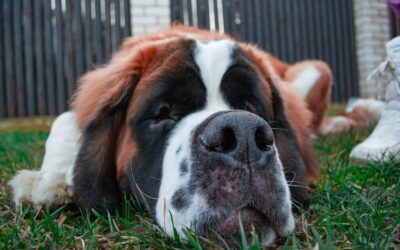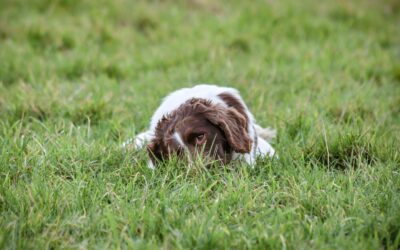Does your canine need dog aggression training?
Unleashing the full potential of your furry friend while ensuring safety and harmony within your home is the duality of every dog owner’s journey. However, when aggression rears its wary head, it can transform that journey into a wild roller-coaster of uncertainty and stress. Whether your beloved pet shows signs of aggression towards other dogs, strangers, or even family members, it’s crucial for responsible pet parents to address these issues promptly, effectively, and with compassion.
In this comprehensive guide, we’ll walk you through the beast that is dog aggression and equip you with the knowledge and tools to transform your aggressive dog into a noble and sociable part of your pack.

Understanding Aggressive Behavior in Dogs
Before hiring dog aggression training it’s important to understanding the basics of dog aggression. Aggression in dogs can stem from various causes, such as fear, possession, territoriality, and frustration.
Commonly, it’s a response to an internal or external stressor that your dog perceives as a threat. To identify and address this behavior, it’s important to recognize the types of aggression and understand why your dog behaves aggressively.

Understanding Different Types of Canine Aggression
Understanding canine aggression extends beyond mere dog aggression training; it encompasses a thorough recognition of its various manifestations. Each form of aggression arises from distinct stimuli and, as such, demands individualized strategies for effective intervention and resolution.
Fear Aggression
When a dog experiences fear, its flight-or-fight response may heavily lean towards ‘fight.’ Fear aggression is typically a dog’s last resort when escape is not an option. In these instances, the dog may exhibit aggressive behavior to protect itself from a perceived threat. Signs of fear aggression include cowering, trembling, a tucked tail, and potentially a sudden snap or bite if the threat intensifies.
Territorial Aggression
Aggressive dogs often exhibit territorial aggression to assert control over an area they perceive as their domain. This behavior may manifest at the fence line, doorstep, or any boundary the dog deems worth protecting. The warning signs of territorial dogs include: barking, lunging, or growling at other animals and visitors. This threatening behavior signals their dominance over the space.

Possessive Aggression
Also known as resource guarding, possessive aggression surfaces when a dog is highly protective of its possessions, such as food, toys, or even certain people. When a dog exhibits possessive aggression, it is conveying a clear message to stay away from what it values, which could lead to aggressive displays if the warning is disregarded.
Social Aggression
Within the complex social structure of the canine world, social aggression is a behavior rooted in establishing and maintaining hierarchy. If your dog regularly growls at other dogs or even humans, they may require dog aggression training to combat this issue.
Redirected Aggression
Sometimes, a dog’s frustration can build up in the presence of an inaccessible target, like a squirrel on the other side of a fence. Unable to act on the primary source of arousal, the dog may turn its aggressive response towards a secondary target, such as another pet or a person, that is within reach.
By recognizing the signs and influences of these different types of aggression, owners can tailor preventive measures, interventions, and management techniques to suit the specific behavioral needs of their dogs, ultimately promoting a safer and more harmonious environment for all.

Common Triggers and Signs
Signs of Aggression: These can include growling, baring teeth, snapping, and biting. Understanding these signals can prevent escalation.
Common Triggers: Sudden or unwarranted touch, loud noises, direct eye contact, and intruding on personal space can trigger aggressive reactions in dogs.
Body Language: A raised tail, ears pinned back, and a tense body indicate your dog is feeling threatened.

Positive Reinforcement Training Techniques
One of the most effective methods to tackle dog aggression is through positive reinforcement – training that encourages good behavior with rewards, rather than focusing on punishment. This approach not only fosters a healthier mental state in your dog but also strengthens the bond between you.
Reward-Based Training Methods
Clicker Training: Using a clicker, a method that clearly marks the exact moment your dog does something right, making it easier for them to associate the correct action with a reward.
Treats and Praise: Offer your dog their favorite treat or affection when they exhibit desirable behavior. Consistency is key; rewards should be given every time the good behavior is shown.
Desensitization and Counter-Conditioning: These tools can be invaluable for reducing fear or anxiety-based aggression. They involve gradually exposing your dog to the triggers of their aggression at a level that doesn’t produce a negative response, coupled with positive associations.
Building Trust and Confidence
Regular exercise and mental stimulation can deplete excess energy that might otherwise fuel aggressive outbursts. Additionally, providing a predictable routine and a consistent set of rules and expectations will create a secure environment that fosters trust and reduces stress for your dog.

Professional Guidance and Support
While your love for your dog is unconditional, training and handling aggression require a tailored, strategic approach. Seeking the assistance of a professional dog trainer is often the most direct path to corrective training.
Collaborating with Professional Dog Trainers and Behaviorists
When aggression becomes a significant concern, consulting with a qualified trainer or behaviorist is paramount. Services like Snouts & Stouts in Virginia offer custom programs specifically designed to address your dog’s aggression issues. Our team of experts will not only work with your dog but will also coach you on management techniques to support your pet’s progress at home.
Finding Local Resources and Support Networks
In addition to professional help, local support networks, such as online webinars and public forums, can connect you with a wealth of experience and support. Sharing stories and advice from fellow dog owners can validate your struggles and, more importantly, provide practical, actionable solutions.

Enhanced Management Strategies for Aggression
Proper management of an aggressive dog extends beyond the basics and dives into the nuances of their daily life. To minimize potential triggers and reinforce positive experiences, it’s essential to pay attention to every detail of their environment and routine.
Harmonizing Indoor Spaces
Creating a peaceful indoor atmosphere is vital. This can be done by maintaining a low-noise environment, designating areas with comforting items like their bed or toys, and using pheromone diffusers that can help soothe anxious dogs. In multi-pet households, ensure that each animal has its own safe space and resources such as food bowls and toys, to avoid competition and resource guarding.
Engaging in Mindful Play and Interaction
The way you interact with your dog during play can significantly affect their behavior. Engage in non-confrontational games that do not encourage over-arousal or dominance. Avoid rough play or tug-of-war with an aggressive dog, and instead, focus on games that promote problem-solving skills, such as puzzle toys.

Establishing Clear Communication
Dogs benefit from understanding what is expected of them. Use a consistent set of commands and signals in your communication. Practice obedience training regularly in short, positive sessions to reinforce these commands and ensure your dog responds reliably.
Consideration of Diet and Health
Sometimes aggression can be linked to dietary sensitivities or health issues. Consult with a veterinarian to rule out any medical conditions that could be contributing to aggressive behavior. Additionally, feeding a well-balanced diet suited to your dog’s specific needs can also have a positive impact on their behavior.
Regular Vet Check-Ups
Routine veterinary care is crucial for maintaining overall health and can also help identify any underlying issues that may be influencing aggression. Staying up to date with check-ups and vaccinations can prevent health-related behavioral problems from arising.
By integrating these advanced management strategies into your routine, you can create a comprehensive plan tailored to address and mitigate aggression, ensuring a safer and more enjoyable living environment for both you and your dog.

Mitigate the Need for Dog Aggression Training | Start Early and Stay Ahead
The statement “prevention is better than cure” is eminently applicable when it comes to managing canine aggression. Identifying temperament issues early on provides a unique window of opportunity to mold a dog’s social skills and coping mechanisms in a positive direction.
Creating a schedule that incorporates consistent socialization practices can lay the groundwork for a well-behaved pet. For example, arrange playdates with other dogs that have calm dispositions, visit dog-friendly parks, or plan controlled encounters in various settings to normalize the presence of strangers and unusual stimuli.
Moreover, observing your dog’s reactions during these interactions is critical for understanding their comfort thresholds. Any signs of potential aggression, like growling over a coveted toy or treat, should not be ignored or punished – but instead, used as a moment for intervention and education.
Teaching transferable skills, such as “drop it” or “leave it,” in a rewarding fashion replaces possessive tendencies with cooperative behavior. A proactive approach, coupled with positive reinforcement, can help prevent the need for dog aggression training, setting the stage for your dog to lead a balanced and sociable life.

Conclusion
Dog aggression is a serious issue that can have dire consequences if left unaddressed. However, with patience, education, and professional guidance, it is entirely possible to alter aggressive behaviors and cultivate a positive, peaceful relationship with your dog. By implementing these expert tips and techniques, you’re not only enhancing the life of your companion but also contributing to the betterment of the dog-owning community at large.
If you’re ready to transform your dog’s behavior, consider Snouts & Stouts training. Whether through daycare and boarding packages, private lessons, or informative seminars and webinars, our world-class team is poised to be your partner in dog aggression training. Don’t wait for the aggression to become unmanageable – start the journey towards a happier, harmonious life with your dog today.




